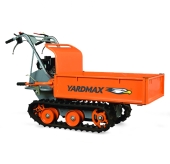
 6
6




 8
8





 6
6




- Tim's Homestead Journal - Purchase a copy of Building a Better World in Your Backyard - Purchase 6 Decks of Permaculture Cards -
- Purchase 12x Decks of Permaculture Cards - Purchase a copy of the SKIP Book - Purchase 12x copies of Building a Better World in your Backyard
 6
6




 8
8




 8
8
















 4
4




- Tim's Homestead Journal - Purchase a copy of Building a Better World in Your Backyard - Purchase 6 Decks of Permaculture Cards -
- Purchase 12x Decks of Permaculture Cards - Purchase a copy of the SKIP Book - Purchase 12x copies of Building a Better World in your Backyard
 3
3




Tommy Bolin wrote:What about all the hundreds of thousands of boilers operated safely for many, many decades in the prior centuries?
That tractors failing was one of maintenance and carelessness.
Aren't compressors just steam engines in reverse?
Tommy Bolin wrote:
This is from Rochester, Nevada, 2010 or so. Probably gone now, the whole ghost town was being swallowed/buried by the tailings pile creeping in from the open pit mine next door.
One engine of some sort drove the big Ingersoll compressor. That vented circular hull in front of it had (long ago vandalized) copper windings for a good sized ( probably DC) Westinghouse generator. After that the draw works/hoist for the head fame in the background. All run from the same power source, maybe steam.
The second photo is from the mine's mechanic shop, of what would have been called an 'ironworker' in the last century. Punch, press, hammer, all pneumatically driven.
 1
1




Jonathan de Revonah wrote: How cool would it be if every homestead had a steam-powered tractor
Invasive plants are Earth's way of insisting we notice her medicines. Stephen Herrod Buhner
Everyone learns what works by learning what doesn't work. Stephen Herrod Buhner
 1
1




 2
2




 2
2




Tradition is not the worship of ashes, but the preservation of fire.
 1
1




Steve Zoma wrote:With a society with no oil, neither my tractor of that homemade one will operate.
 3
3




Timothy Norton wrote:How interesting, I stumbled upon a video right on this subject! It looks like they are still early in their build of a true modern steam tractor but folks are exploring it. I'm interested in the idea of 'lightweight' steam boilers as the systems I am used to are huge in scale.
 3
3




 3
3




Steve Zoma wrote:I think steam might be the future of powered units, but I don't think it will be coal, oil or wood, but rather nuclear powered steam units. The US Navy has sealed reactors that never need to be refueled, they just operate to their end of life and then are picked up and hauled away for safe storage.
Now that powerplants are going with that same design, that is tractor trailer sized reactors that are taken to a sight and added in segments to make much bigger powerplants cumulatively, I can see nuclear powered tractors being driven by nuclear power units, making steam and making tractive power so that food can be produced even more inexpensively. Or trucks hauling freight across country, and definitely trains powered by nuclear power.
If all this seems farfetched, Three Mile Island is coming back online. It is slated to cost 1.1 billion dollars, but with the need for 24/7/365 electricity for data centers, nuclear power is making a resurgence. Micro-units making steam could do the same for tractors someday soon.
 1
1




 3
3




 1
1




 1
1




Steve Zoma wrote:Was it a Remington? Rumely? Best? Holt? McLaughlin?
These are some of the steam road tractors I have in my old tractor book.
 1
1




 1
1





 1
1




 1
1




Steve Zoma wrote:Does anyone on here know anything about domestic steam heating?
 1
1





|
If you want to look young and thin, hang around old, fat people. Or this tiny ad:
heat your home with yard waste and cardboard
https://freeheat.info
|




